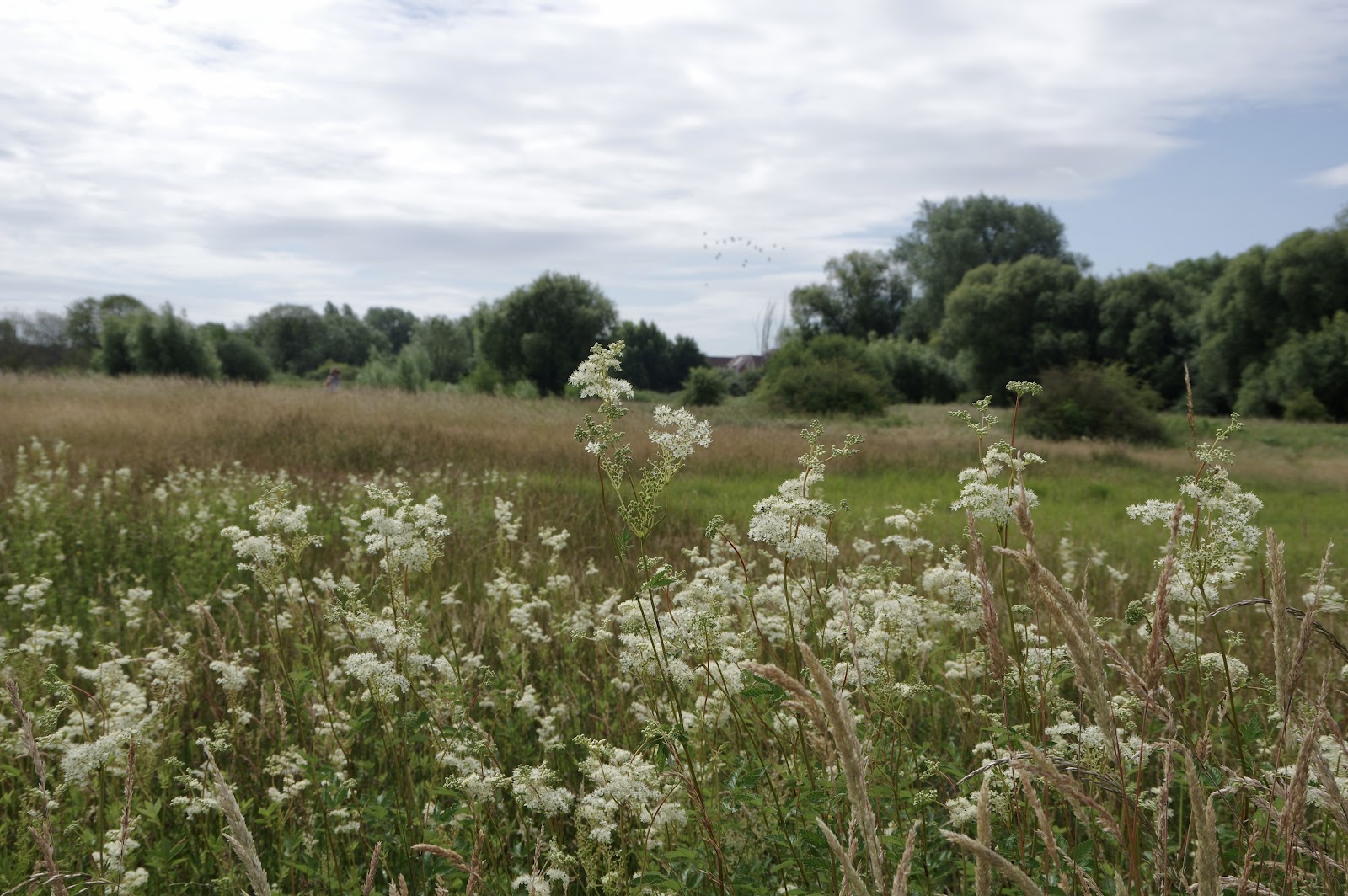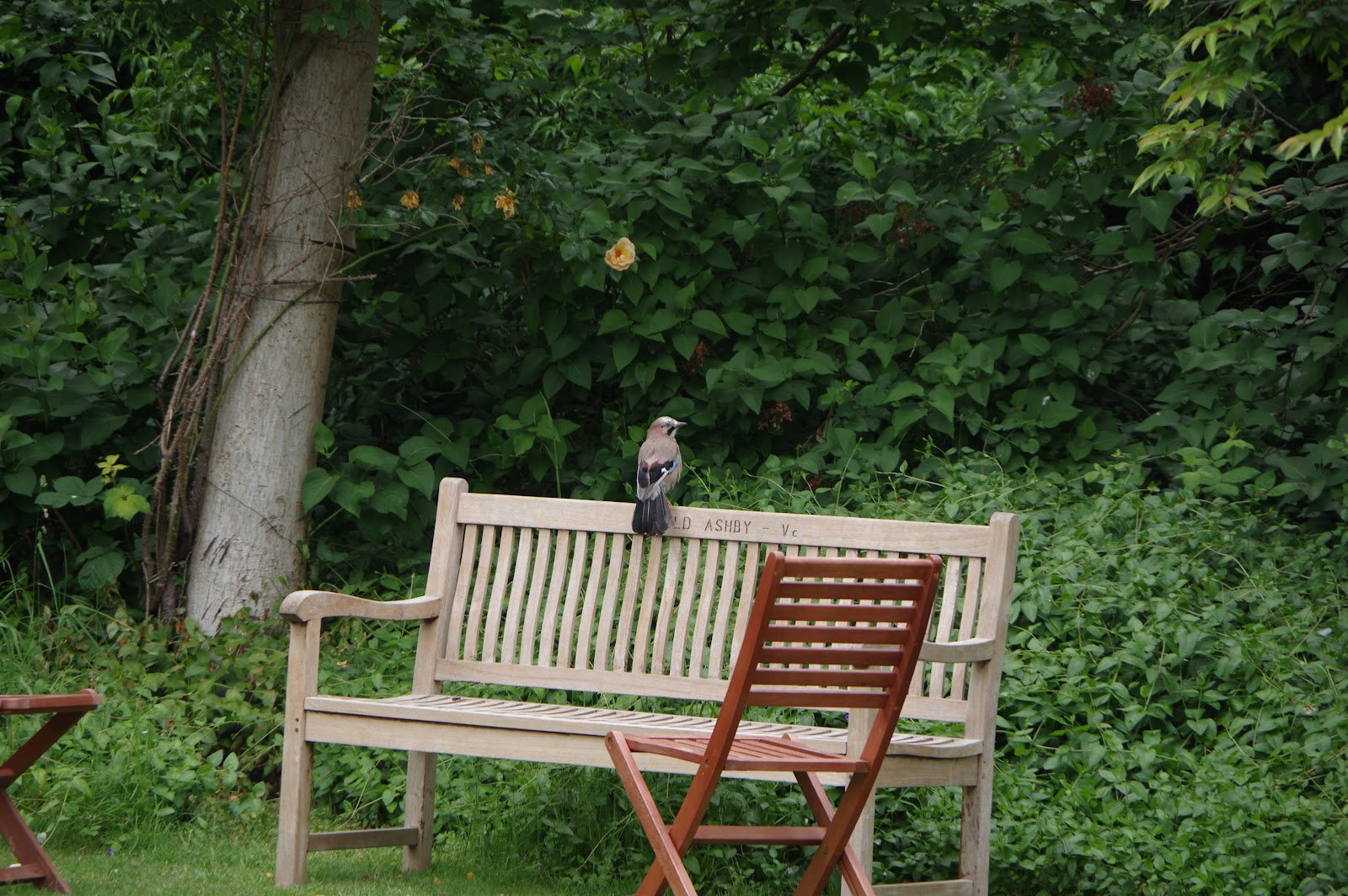Hemlock (Conium maculatum) I believe. Very poisonous, it did for Socrates!
A diary of back garden botany, urban ecology, rural rambles and field trips to the middle of nowhere...
Sunday, 29 June 2025
Friday, 27 June 2025
As the drought continues marshy areas are a good habitat to spot wildflowers. Species like Meadowsweet (Filipendula ulumaria) thrive in damp meadows.
Purple Loosestrife (Lythrum salicaria) flourishes in marshes, ditches and along the banks of streams, rivers and ponds.
Walking through the Purwell Ninesprings nature reserve today the effects of the dry summer are evident even here. The chalk stream that runs through it rises nearby and the aquifer itself won't run dry. Nonetheless the area seen above is now a muddy crust whereas it would usually be a submerged part of the flood plain.
Tuesday, 24 June 2025
Weather wise this has been a good year for butterflies (in certain respects). 2024 was disastrous for insects generally, cool and damp from spring into summer. That was always going to have a knock-on effect: less butterflies so less eggs laid so less caterpillars so less butterflies.
The warm, dry conditions thus far have been favourable for such butterflies as have emerged. But here's a conundrum. The rain last year made it made it a lush year for wildflowers but a dearth of pollinators to pollinate them.
What I'm noticing in the countryside this summer is that it's not very flowery. For example where there were waist-high wildflowers on the Pegsdon Hills last summer now there are dry grasses. Not much to nectar on!
Here in the UK we have an island ecosystem and a lot of weather. So I don't necessarily want to attribute everything to climate change but we seem to be experiencing extremes of downpour and drought. Rain and sun is what we need, not just one or the other.
Sunday, 22 June 2025
Saturday, 21 June 2025
Friday, 20 June 2025
Ivy Broomrape (Orobanche hederae) in flower. There must be a couple of hundred around the grounds of the music school -which is surprising.
In the 1980s it was considered to be one of Hertfordshire's rarest wildflowers with only one known colony in a churchyard in North Herts. Moreover this was said to be the only site in the eastern part of England north of the Thames. (Ref. Brian Sawford's great book of 1990 'Wildflower Habitats of Hertfordshire')
I wrote a longer entry on this subject last year [10th. June], suffice to say the Broomrapes at Benslow are an intriguing manifestation of a rare species.
Sunday, 15 June 2025
Lavendula angustifolia 'Munstead' is a compact Lavender with vivid blue-purple flowers.
Like all Lavenders 'Munstead' attracts bees in profusion. For maximum bees it's worth planting one of the Lavandin cultivars i.e. Lavendula x intermedia which is the hybrid of L. angustifola and L. latifolia. They are the most aromatic and bees mob them.
Monday, 9 June 2025
Thursday, 5 June 2025
By way of a contrast to the Common Spotted Orchid mentioned in my last entry here is the very uncommon Burnt-tip Orchid. Seen here at Knocking Hoe, one of only a handful of colonies in the UK. Neotinea ustulata grows on sloping chalk and limestone grassland grazed to a short sward. A niche habitat much diminished by modern agriculture.
Wednesday, 4 June 2025
There are 52 Orchids native to the UK (or 56 or 57 depending which source you refer to). The Common Spotted Orchid (Dactylorhiza maculata subsp. fuchsii) is indeed the most common growing as it does in a wide range of habitats including grassland, heaths, moors, woodland, hedgerows, wetlands, coastal areas, farmland and gardens.
Subscribe to:
Comments (Atom)


























